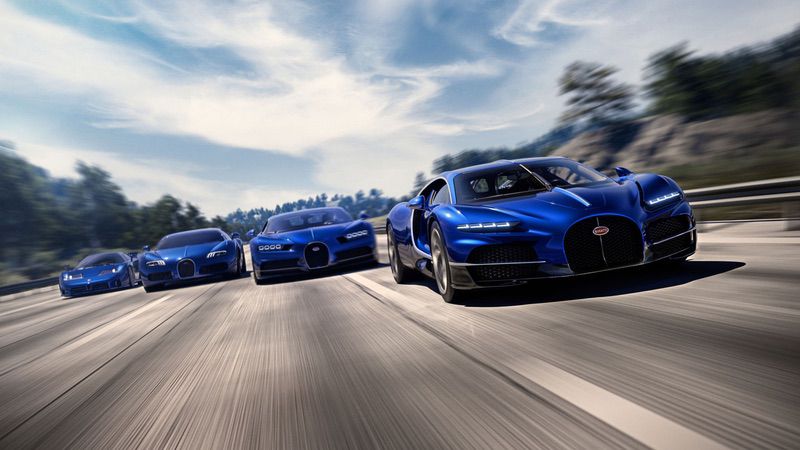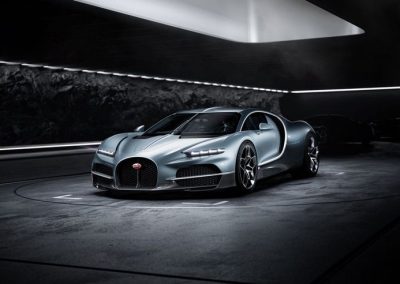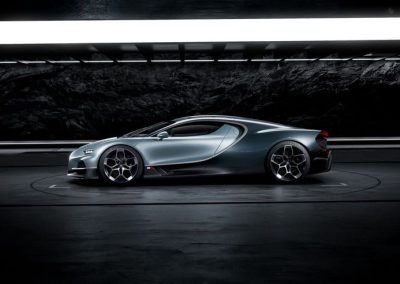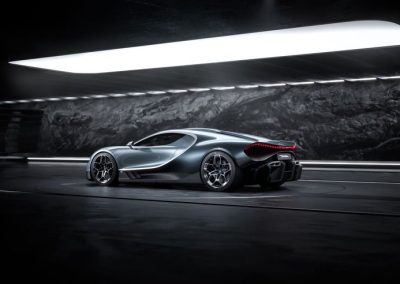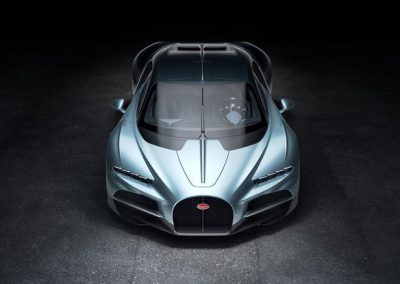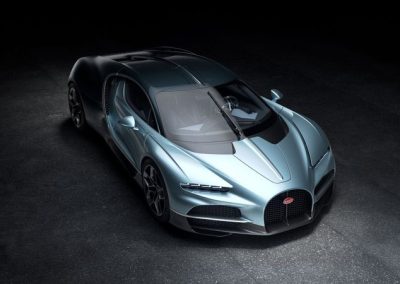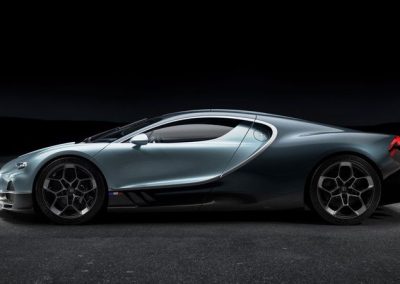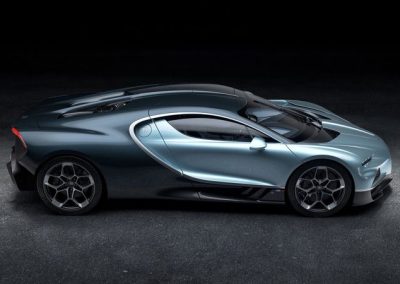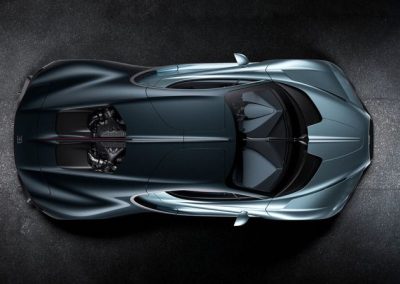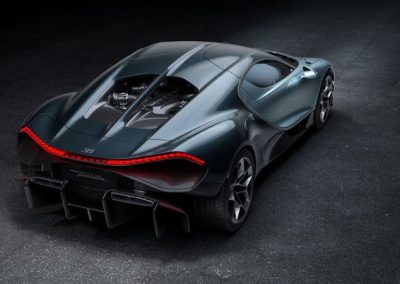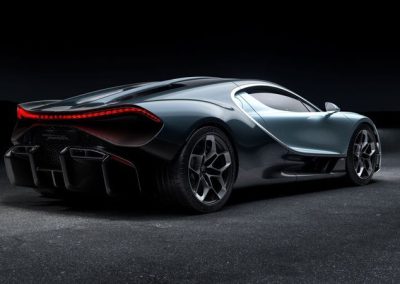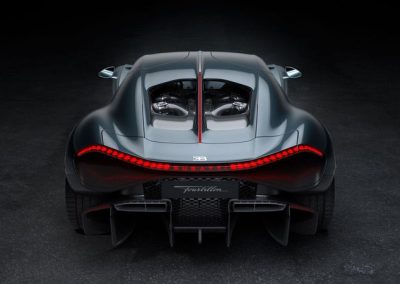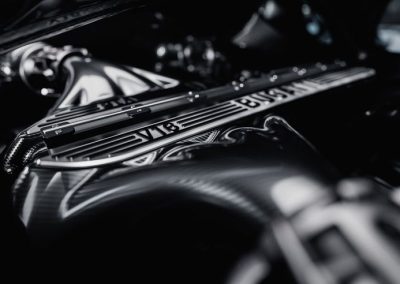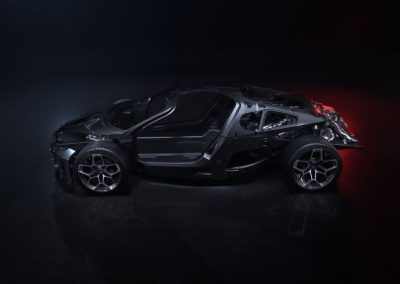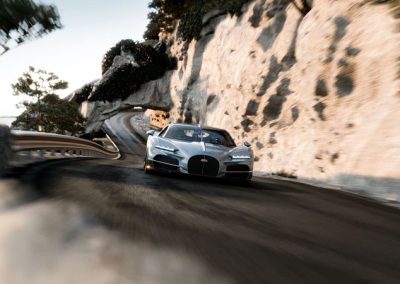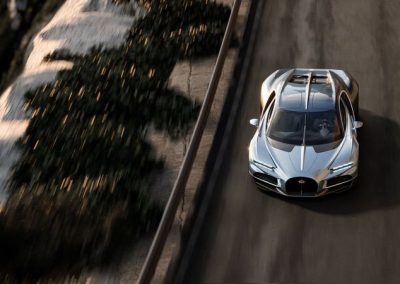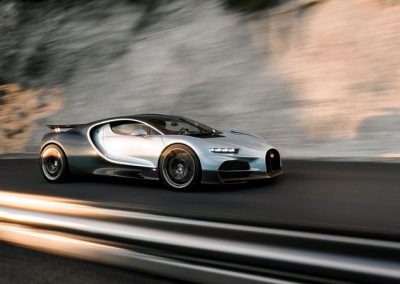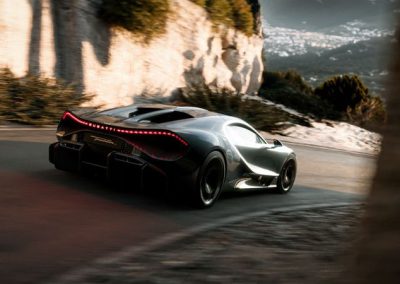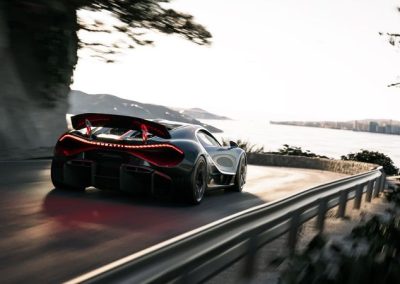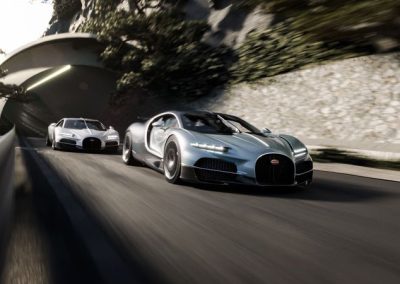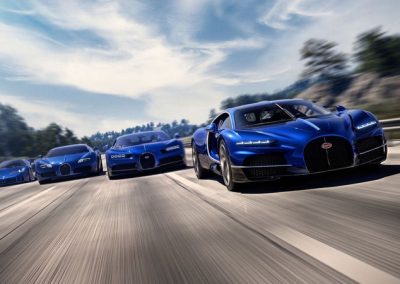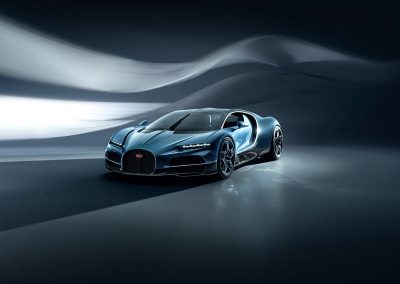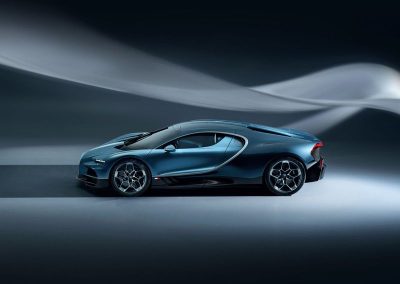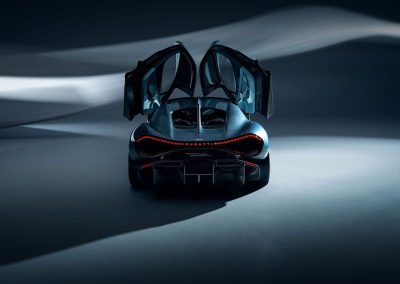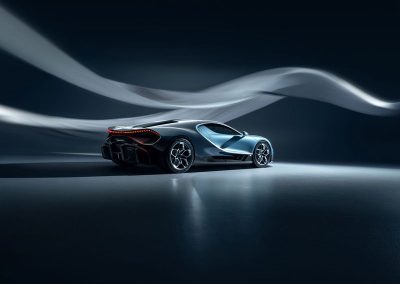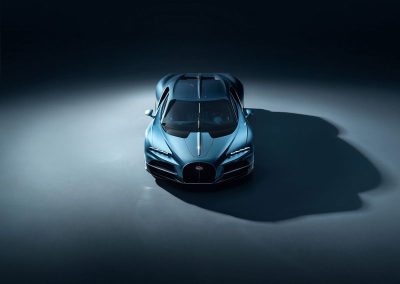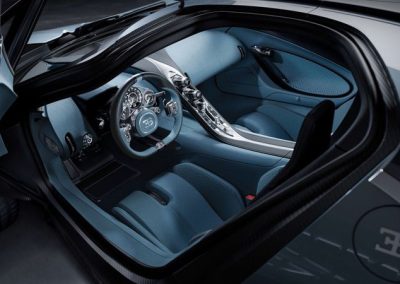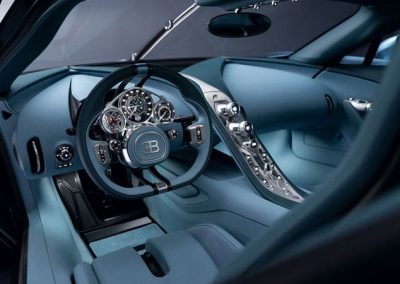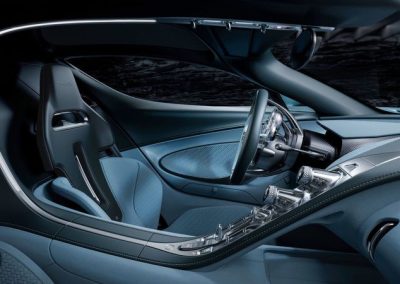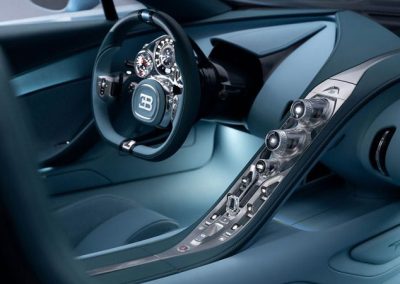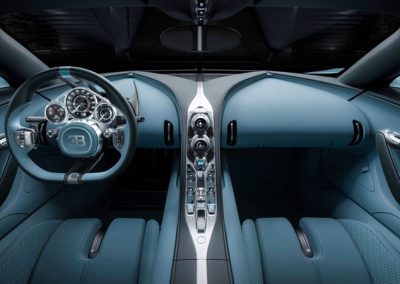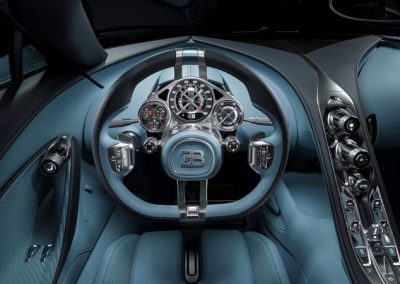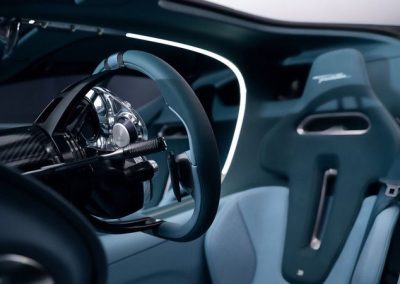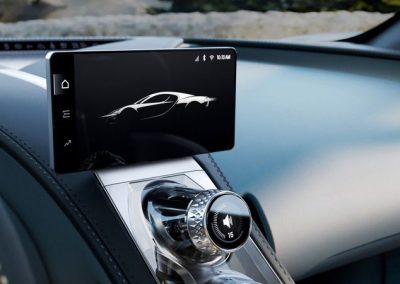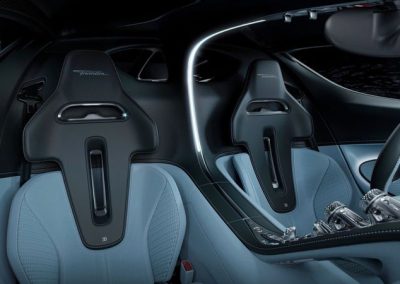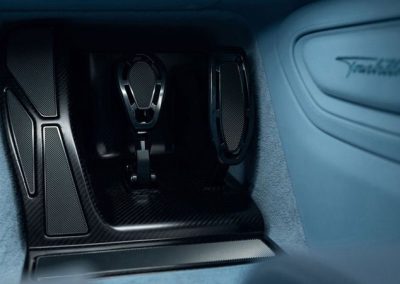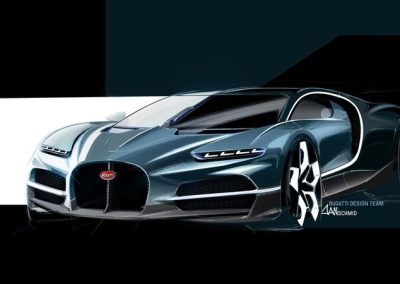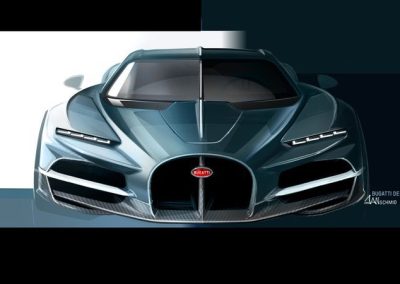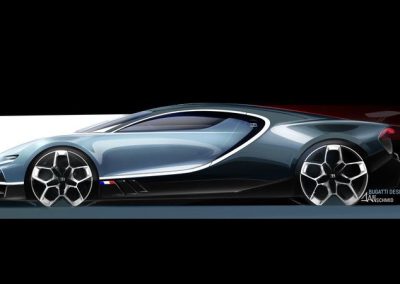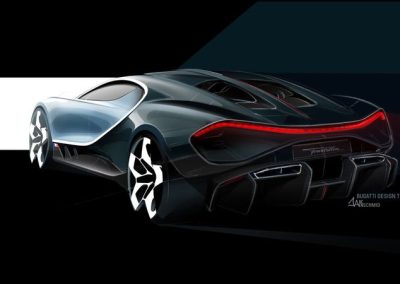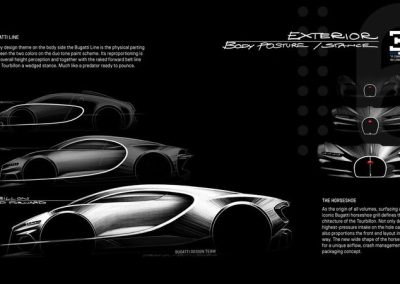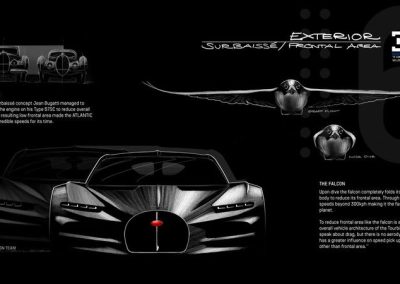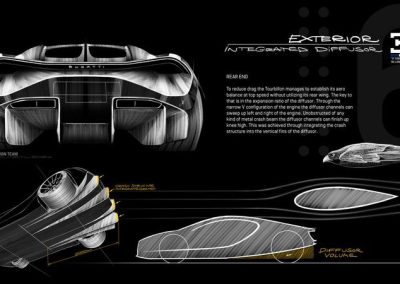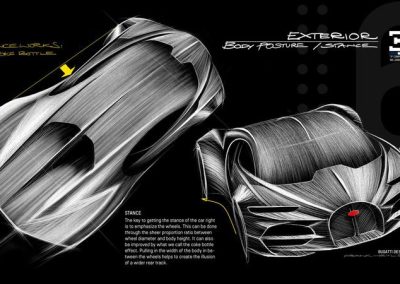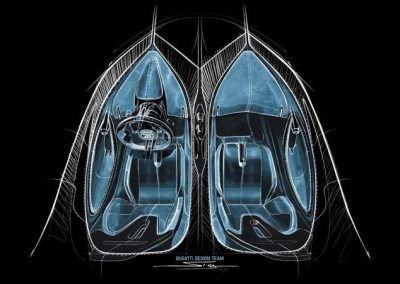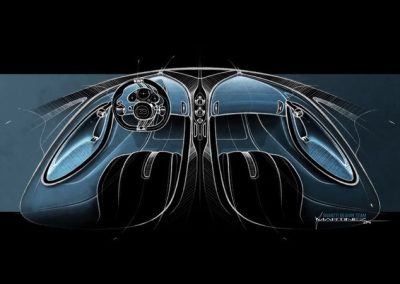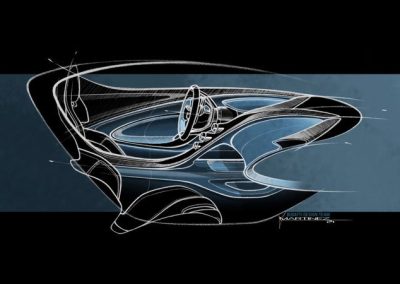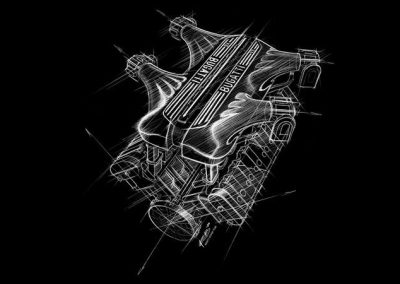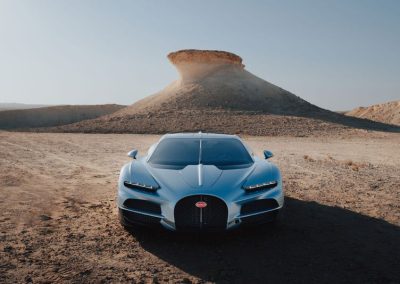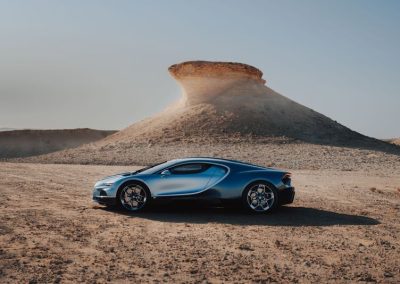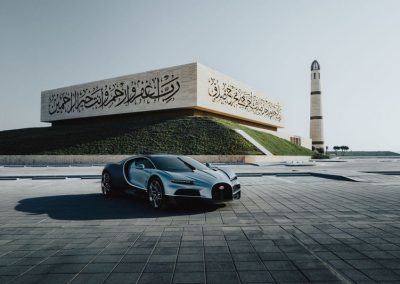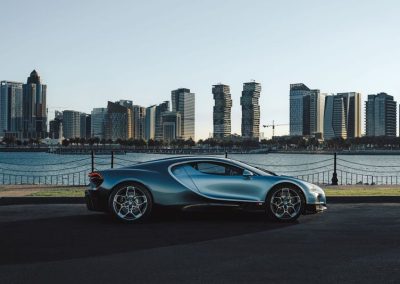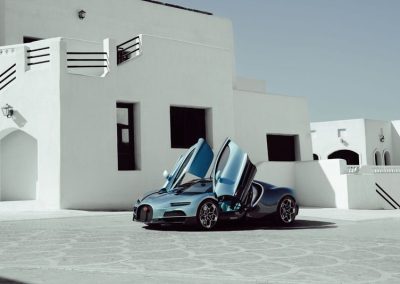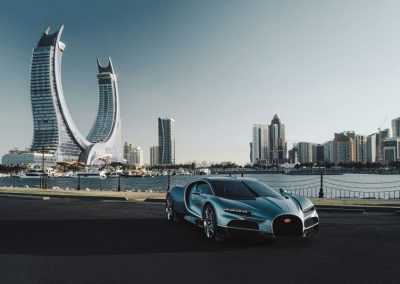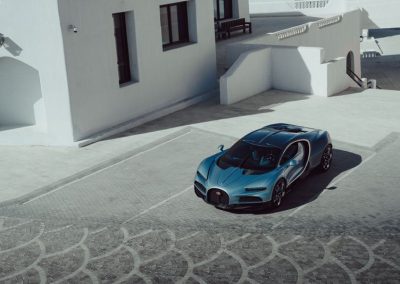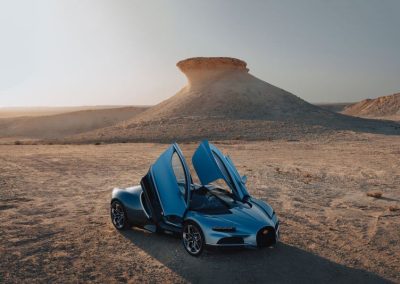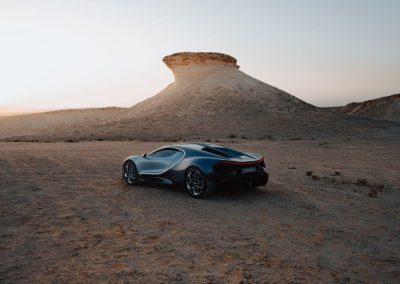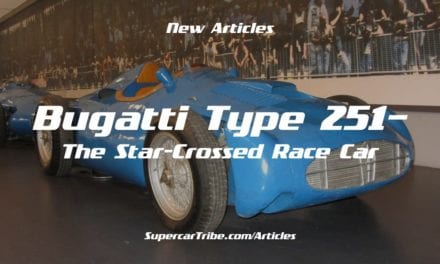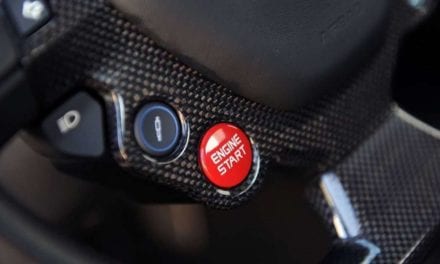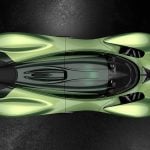Introduction
In the rarefied world of hypercars, change doesn’t come often—but when it does, it arrives with a bang. Enter the Bugatti Tourbillon, the latest crown jewel in the marque’s legacy of audacious engineering and uncompromising luxury. Replacing the iconic Chiron and signaling the end of the W16 era, the Tourbillon isn’t just Bugatti’s next chapter—it’s a bold new book entirely. And with a naturally aspirated V16 engine paired to a state-of-the-art hybrid system, it might just be the most ambitious powertrain ever fitted to a road car.
Unveiled with typical Bugatti flair, the Tourbillon brings together two worlds: the analog beauty of haute horlogerie and the electric future of high-performance motoring. While competitors race towards full electrification, Bugatti has chosen to fuse mechanical purity with cutting-edge hybrid technology, creating a symphony of old-world charm and future-ready engineering. This isn’t just a car—it’s a rolling testament to what’s possible when tradition meets innovation.
In this in-depth guide, we explore every angle of the Bugatti Tourbillon: from its breathtaking design and handcrafted interior to the staggering technical wizardry under the skin. We’ll examine how it stacks up against the outgoing Chiron and the current crop of hybrid hypercars, discuss its market positioning, production details, and what makes it an irresistible object of desire for collectors. Whether you’re here to admire, aspire, or acquire, this is your definitive look at what may well be the last great mechanical hypercar of the modern age.

Bugatti Heritage & the End of the W16 Era
To understand the significance of the Bugatti Tourbillon, one must first appreciate the monumental chapter it closes. Since the rebirth of the brand under Volkswagen Group in the early 2000s, Bugatti has been defined by a singular engineering marvel: the quad-turbocharged W16 engine. First introduced in the Veyron, and later refined in the Chiron, this powerplant wasn’t just a technological feat—it became a symbol of excess, precision, and dominance. It redefined the very meaning of “performance,” smashing through the 1,000 horsepower barrier and setting records that forced the rest of the automotive world to play catch-up.
The Veyron stunned the world in 2005 with its 407 km/h (253 mph) top speed. The Chiron took that to even greater heights, culminating in the Chiron Super Sport 300+ that famously breached the 300 mph barrier. For nearly two decades, the W16 sat atop the internal combustion throne, unmatched and unchallenged.
But even kings must eventually abdicate. With the automotive world rapidly embracing electrification and tighter emissions regulations looming large, Bugatti faced a choice: retire the W16 gracefully or let it fade into irrelevance. True to form, they chose celebration over compromise, sending it off with limited-edition tributes like the Chiron Super Sport and Mistral.
Now, the Tourbillon steps forward not to replicate the W16’s glory, but to redefine what comes next. It’s a clean break—but not a betrayal. In place of four turbochargers, Bugatti offers a naturally aspirated V16 engine, co-developed with Cosworth, harmoniously paired with three electric motors. It’s a completely new configuration, yet it still delivers the kind of power, sound, and visceral magic that has always been central to the Bugatti experience.
In many ways, the Tourbillon isn’t just a successor—it’s a spiritual reboot. One foot in the brand’s rich history of analog excellence, the other firmly planted in the hybrid hypercar frontier. And in doing so, Bugatti ensures that the end of the W16 era is not a funeral—it’s a rebirth.
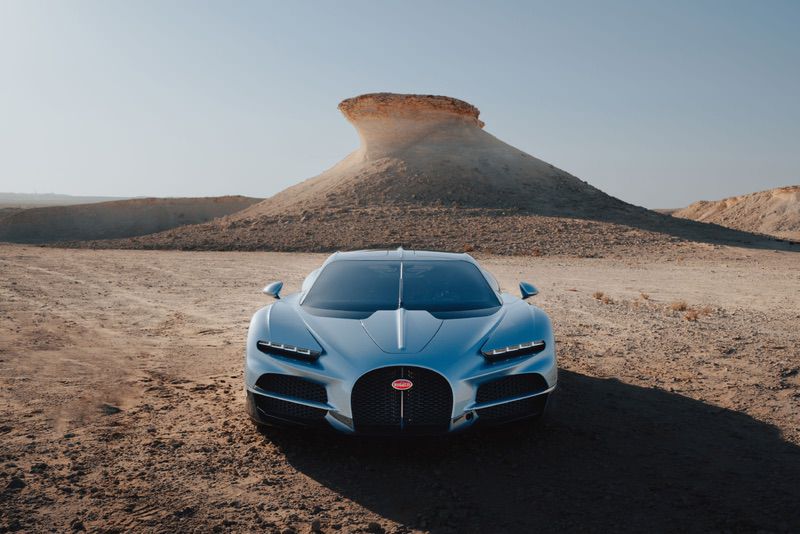
Design Philosophy
If the W16 symbolized Bugatti’s unrelenting pursuit of performance, the Tourbillon’s design tells a more nuanced story—one of balance between legacy and futurism, form and function, emotion and innovation. While the powertrain may be revolutionary, the design is unmistakably Bugatti. One glance, and you’ll see echoes of the Veyron and Chiron, yet there’s a freshness to the Tourbillon that reveals its true nature: a new Bugatti for a new era.
The iconic horseshoe grille remains proudly front and center, an essential visual anchor since the days of Ettore Bugatti. Flanking it are slim, futuristic LED headlamps integrated into complex aerodynamic structures that direct airflow with the finesse of a fighter jet’s intake. Every vent, curve, and crease has been meticulously shaped—not just for beauty, but to cool a V16 hybrid monster and keep it glued to the tarmac at speeds few dare to imagine.
From the side, the signature Bugatti “C-line” curve is still present, but it’s been sharpened and reinterpreted. It’s not merely a flourish—it channels air to the radiators and rear aero surfaces. The side profile is lower, longer, and arguably more elegant than its predecessors, thanks in part to the packaging benefits of the new powertrain and battery system. The rear haunches are muscular but sleek, housing an active aerodynamic system that adjusts in real-time.
Move to the back, and the Tourbillon reveals its most aggressive stance. A full-width light bar stretches across a minimalist rear end, interrupted only by dramatic vertical aero elements and a large, centrally positioned exhaust. Unlike the Chiron, which looked like a refined brute, the Tourbillon exudes a sense of mechanical grace, as though every panel has been milled from billet aluminum by a master watchmaker rather than stamped by a robot.
Speaking of timepieces, the Tourbillon takes its name from one—specifically, the high-end, rotating mechanical escapement used in luxury Swiss watches. And the car’s design mirrors that inspiration: intricate, dynamic, and purposeful, meant to be admired like a work of kinetic art.
Every Bugatti is sculptural, but the Tourbillon is perhaps the first to be deliberately architectural—less about imposing dominance and more about inviting reverence. It’s not just about how fast it looks, but how intelligently it breathes, flows, and exists in space.
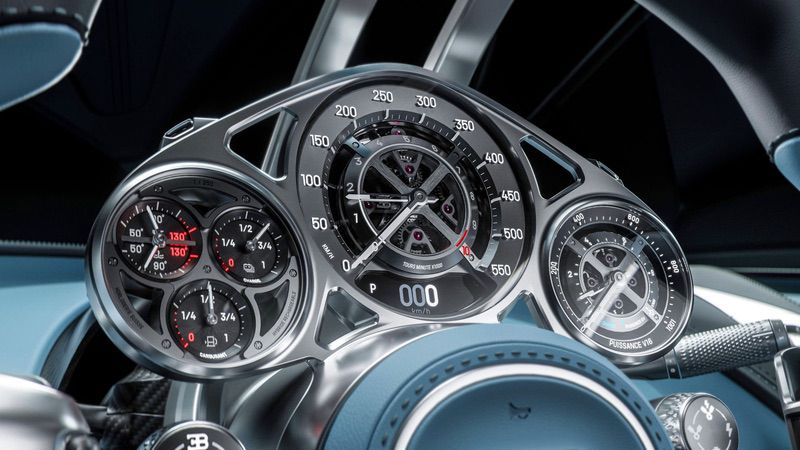
Interior & Craftsmanship
Open the dihedral doors of the Bugatti Tourbillon, and you’re not just entering a cabin—you’re stepping into a horological cathedral. Where other hypercars lean on digital screens and touchscreen overload, Bugatti has taken an entirely different route: mechanical elegance inspired by the timeless complexity of Swiss watchmaking.
At the heart of the interior lies the instrument cluster, a true marvel in both design and engineering. Constructed with over 600 individual parts, it’s a fully mechanical unit, mounted on the steering column and built by Swiss watchmakers. No LCDs, no virtual dials—just real gears, polished components, and sapphire glass displaying speed, revs, and driving data with the precision of a chronograph. It doesn’t animate—it lives.
The steering wheel itself is unlike anything on the road. Minimalist and perfectly balanced, it’s designed to rotate aroundthe fixed instrument cluster, ensuring a clear line of sight at all times. The rim is clad in the finest leather, and its metal spokes are machined with the same obsessive attention to detail you’d expect from a bespoke timepiece.
The rest of the cabin is equally exquisite. Bugatti has ditched unnecessary screens and gimmicks in favour of tactile craftsmanship. Every control knob is made from solid metal, knurled to perfection, and weighted for a satisfying click. Instead of a central screen, a hidden digital display rises discreetly from the dash only when needed, preserving the interior’s analog purity while still offering access to navigation, connectivity, and drive modes.
Materials? As expected, nothing short of divine. Hand-stitched leathers, forged aluminum, carbon composites, and crystal glass surfaces are blended seamlessly to create a cabin that’s both modern and deeply rooted in traditional coachbuilding. Even the seats are a masterclass in form and function—contoured for comfort on long grand tours, but supportive enough to handle hypercar cornering forces.
Perhaps most impressively, the cabin is bathed in natural light, thanks to a roof design that incorporates a crystal-like canopy with integrated ambient lighting. It gives the interior a museum-like serenity, framing the world outside while cocooning you in mechanical beauty.
Where the Veyron and Chiron felt like jet cockpits trimmed in leather, the Tourbillon feels like the drawing room of a mechanical genius—a sanctuary where every touchpoint tells a story, and every material earns its place. It’s not about chasing trends or fitting in with digital-first rivals. It’s about preserving the soul of analog luxury in a world gone touchscreen-crazy.
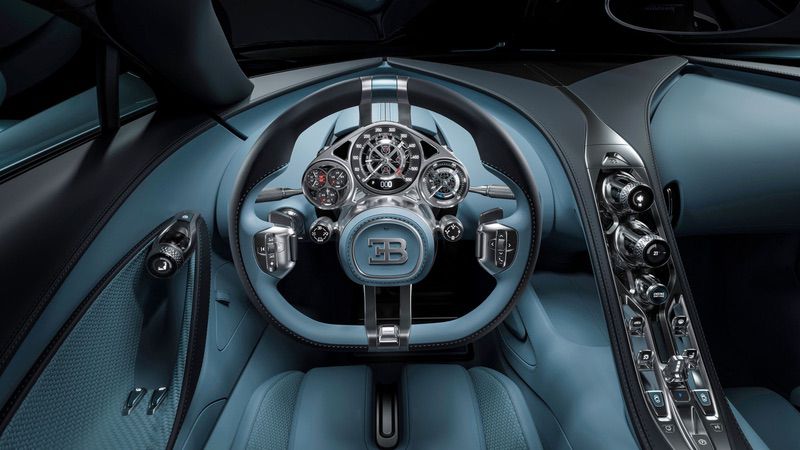
Engineering Revolution: The V16 Hybrid Drivetrain
For most automakers, the retirement of a legendary engine like the W16 would signal a slow fade into quiet electrification. Not for Bugatti. In true defiant fashion, the Molsheim marque has instead delivered one of the boldest engineering statements in modern automotive history: a naturally aspirated 8.3-litre V16, paired with a triple electric motor hybrid system. Yes, you read that correctly—sixteen cylinders, zero turbos, and three motors. The Bugatti Tourbillon is rewriting the hypercar rulebook.
🔧 The V16 Engine – Mechanical Royalty
The new V16 is a towering achievement in itself. Developed in collaboration with Cosworth, the 90-degree unit displaces 8.3 litres and revs to an operatic 9,000 rpm. Gone are the turbos that defined the W16’s brute-force approach. In their place is something more visceral, more emotional—a symphonic, high-revving powerplant designed to stir the soul.
Longer than a Veyron’s entire W16 engine block, the V16 is mounted longitudinally and sculpted for optimal weight distribution and center of gravity. It’s also surprisingly light for its size, thanks to extensive use of lightweight alloys and modern manufacturing techniques. Power output from the combustion engine alone is a reported 1,000 horsepower, with the kind of throttle response and induction sound that only a naturally aspirated engine can deliver.
This isn’t just a throwback to the golden age of high-performance engines—it’s the spiritual successor to the V12s and flat-12s of motorsport legend, only now wrapped in Bugatti refinement and 21st-century tech.
⚡ The Hybrid Electric System – Future-Ready
Complementing the V16 are three electric motors: one mounted on the front axle and two at the rear, giving the Tourbillon a through-the-road all-wheel-drive system. The electric system alone contributes an additional 800 horsepower, bringing the combined output to a staggering 1,800 horsepower.
The battery is an advanced 800-volt solid-state unit, placed low and central to optimize weight distribution and handling dynamics. Unlike typical hybrids, the system isn’t just there to boost fuel economy or emissions scores. It’s designed for performance—to fill torque gaps, provide instantaneous response, and push the limits of traction and acceleration.
You’ll be able to drive the Tourbillon in full-electric mode for short distances, ideal for low-speed cruising through city centers or silent departures from your chateau. But when the V16 awakens, the entire drivetrain comes alive, delivering a crescendo of internal combustion fury and electric surge like nothing else on the planet.
⚙️ Gearbox and Driveline
Power is transmitted through a lightweight dual-clutch automatic transmission, purpose-built to handle the sheer complexity and brutality of the V16-hybrid combination. Expect lightning-fast shifts, intelligent torque vectoring, and multiple driving modes ranging from serene to savage.
Bugatti hasn’t yet confirmed the exact performance figures, but early indicators suggest 0–100 km/h in under 2.0 seconds, and a top speed well over 400 km/h (249 mph)—despite the added weight of the hybrid components. And thanks to the electric motors, you get torque that’s always available, with no lag and no compromise.
🔋 The New Standard of Hybrid Hypercars?
What sets the Tourbillon apart from rivals like the Rimac Nevera or Mercedes-AMG One is its refusal to sacrifice soul for statistics. Yes, it’s fast—probably the fastest—but it’s also a sensory experience, with a screaming V16 soundtrack and real mechanical engagement. It’s not just about zero-to-sixty times; it’s about drama, emotion, and connection.
The V16 hybrid powertrain may be Bugatti’s boldest engineering statement yet—a harmonious fusion of mechanical artistry and electric thrust. In a world increasingly ruled by silence and software, the Tourbillon roars into the future with sixteen cylinders and three motors singing in perfect harmony.
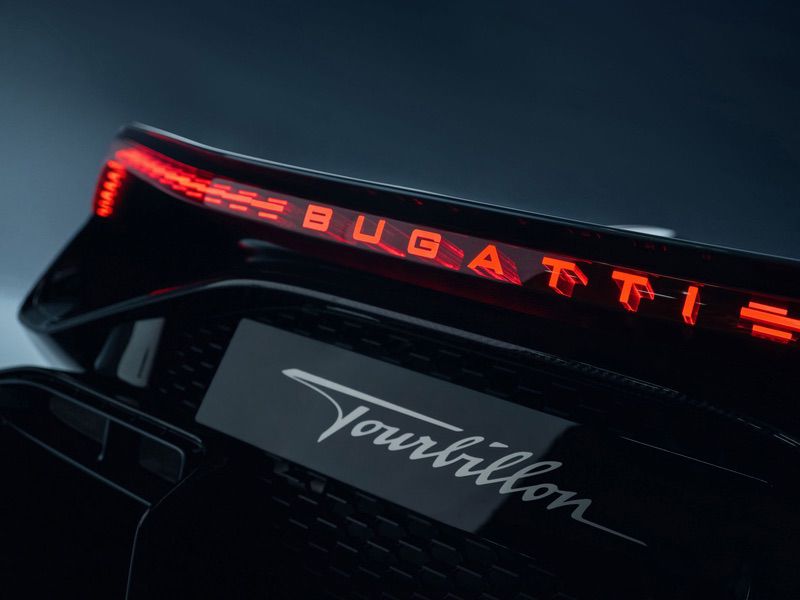
Performance & Driving Experience
Numbers don’t lie—but they also don’t tell the full story. And while the Bugatti Tourbillon’s 1,800 horsepower, V16 symphony, and electric punch are undeniably impressive, it’s how these elements come together on the road that transforms this hypercar from a machine into an experience.
🏁 Acceleration and Top Speed: Redefining the Extremes
Bugatti hasn’t yet released the official figures, but insiders suggest the Tourbillon will hit 0–100 km/h in under 2.0 seconds, with 0–200 km/h arriving before your brain can finish processing the first number. This is not just fast—it’s time-bending. Aided by instant torque from three electric motors and all-wheel drive traction, the Tourbillon delivers brutal acceleration without drama—unless you count your passenger’s scream as dramatic.
The top speed? Expect well over 400 km/h (249 mph), perhaps approaching or even eclipsing the Chiron Super Sport 300+’s 304 mph record. But unlike that record-focused missile, the Tourbillon is designed to deliver performance with polish, maintaining composure and confidence across all conditions, not just on an arrow-straight test track.
🌀 Handling: Precision in Motion
With the weight of the hybrid system carefully centralized, the Tourbillon promises nimble responses and astounding grip. The electric front axle provides dynamic torque vectoring, allowing the car to pivot through corners with an agility that belies its size and power. Combined with an adaptive suspension system and active aero, the Tourbillon offers tailored dynamics—from grand touring comfort to razor-sharp track weapon.
Bugatti has also worked tirelessly to reduce mass where it counts. Carbon fibre structures, lightweight alloys, and intelligent battery placement help offset the additional weight of the hybrid system. The result is a car that feels athletically light, not just monstrously powerful.
🛞 Braking and Control: Stopping the Beast
Of course, with great speed comes great responsibility—and great brakes. The Tourbillon is equipped with carbon-ceramic brake discs, regenerative braking from the electric motors, and cutting-edge brake-by-wire systems. Together, they offer surgical stopping power, resisting fade even after repeated high-speed assaults.
The steering, meanwhile, is expected to be electro-hydraulic, offering the kind of tactile feedback often lost in fully electric systems. It’s a nod to purists—another example of Bugatti blending old-school engagement with modern performance.
🚀 The Experience: Mechanical Theatre
But what truly sets the Tourbillon apart is how it feels. The V16 isn’t just a power source—it’s a performer. It sings through a custom-tuned exhaust system that resonates like a grand piano tuned by a maniac. It builds revs with spine-tingling urgency, and when it hits the redline, it feels like you’ve been sucked into a turbine made of fire and thunder.
At the same time, the electric motors add instantaneous torque, making low-speed driving shockingly civilised. Whether you’re tiptoeing through Monaco’s cobbled streets in EV mode or hammering down the Mulsanne Straight, the Tourbillon adapts, evolves, and always delivers something extraordinary.
Where other hypercars are content to impress, the Tourbillon wants to involve. It’s not about lap times—it’s about moments. That instant you floor it and feel your chest compress. That shriek of the V16 at 9,000 rpm. That silence just before the EV system kicks in. It’s a driving experience crafted not just with science, but with soul.
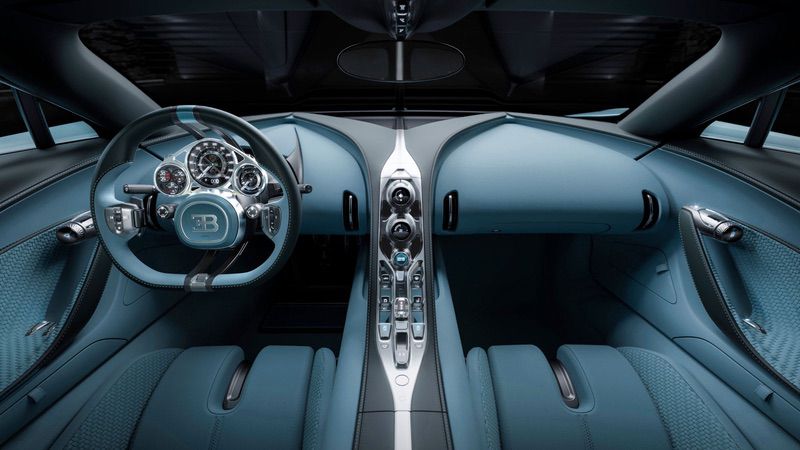
Interior Comfort and Technology
In a hypercar world increasingly obsessed with screens, swipe gestures, and voice assistants, the Bugatti Tourbillon dares to ask: What if true luxury isn’t digital at all? In many ways, the Tourbillon’s cabin is a rebellion against tech overload, embracing analog elegance while subtly hiding its modern capabilities beneath a layer of old-world craftsmanship. But don’t let the absence of touchscreens fool you—this is still one of the most technologically advanced interiors ever created.
🪑 Comfort Without Compromise
Despite its earth-shattering performance, the Tourbillon doesn’t punish its occupants. On the contrary, Bugatti has gone to great lengths to make the cabin welcoming and usable, whether you’re darting through alpine passes or cruising down the Riviera. The seats are designed with ergonomic precision, supporting the body through aggressive maneuvers while offering enough cushioning for long-distance luxury.
The seating position is low and focused, yet there’s an openness to the cabin thanks to the glazed roof panels, which bathe the interior in natural light and amplify the sense of space. Headroom and legroom are generous by hypercar standards, and access is surprisingly civilised—more “grand tourer” than “Le Mans prototype.”
Climate control, ambient lighting, and even the audio system (yes, it has one!) are all tuned for comfort and serenity, ensuring that when the Tourbillon isn’t being driven at ten-tenths, it behaves like a world-class GT.
🕰️ Analog Soul, Digital Brain
The most striking departure from modern norms is the lack of a visible infotainment screen. Instead of dominating the dash with pixels, Bugatti has hidden a compact digital interface within the center console. When needed—for navigation, media, or system settings—it gracefully emerges with a mechanical flourish. When not in use, it disappears, leaving only an unbroken sea of leather, metal, and sculpture.
This approach is intentional. Bugatti wants drivers to focus on the road, the revs, the mechanical heartbeat of the car—not the latest Spotify playlist or a TikTok notification. And in doing so, they’ve created an environment that’s immersive in a way that no screen-filled cockpit can match.
That said, the Tourbillon isn’t a Luddite. It features Apple CarPlay, advanced navigation, cloud connectivity, over-the-air updates, and a custom Bugatti app for vehicle settings, diagnostics, and concierge services. Everything is there—it’s just integrated discreetly, like a hidden complication in a luxury watch.
🎛️ Controls That Delight
From the milled-aluminum dials to the watchmaker-grade instrument cluster, every physical control in the Tourbillon is designed to engage the senses. The click of a selector, the feel of the metal beneath your fingertips, the weight of a switch—these are not afterthoughts. They’re integral to the experience, offering a tactile connection between human and machine that modern touchscreens simply cannot replicate.
Even the steering wheel-mounted controls are minimal, limited to only the essential drive mode toggles and haptic feedback buttons. It’s a clean, uncluttered interface that keeps your focus exactly where it should be—on the drive.
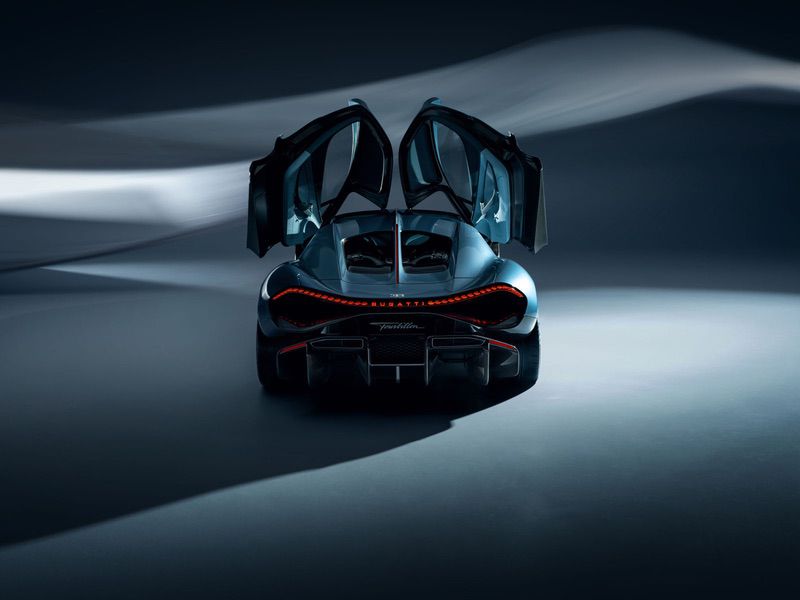
Driving Experience
There are fast cars. There are luxurious cars. And then there’s the Bugatti Tourbillon—a vehicle that transcends both, delivering an experience so visceral, so orchestrated, and so exquisitely absurd that even seasoned hypercar veterans might find themselves short of breath. Driving the Tourbillon isn’t just an activity—it’s a theatrical performance, with you at center stage.
🎼 A Symphony of Motion
Turn the key—sorry, press the start button—and you’re greeted not with a whir or a polite hum, but with the deep, unmistakable resonance of sixteen pistons coming to life. It’s not the guttural bark of the Chiron’s W16, nor the whine of an electric drivetrain—it’s something more… refined yet feral. A crescendo of precision, like the opening note of a Vivaldi concerto played on heavy machinery.
Set off in electric mode, and the Tourbillon glides silently through city streets like a phantom—smooth, composed, and almost eerie in its stealth. It’s your moment of calm before the storm, and one that allows you to savour the experience of moving under pure electric power in what is otherwise a monster of combustion.
Switch to hybrid or full-power mode, and the mood changes. The V16 fires up, and the car instantly becomes a rolling thunderstorm. With 1,800 combined horsepower and electric torque on tap, the acceleration isn’t just fast—it’s teleportation. Your brain struggles to keep up with your body as the landscape folds around you. But unlike many electric hypercars that offer speed without soul, the Tourbillon delivers drama. Sound, vibration, G-forces—it all comes alive.
🏎️ From Hairpins to Highways
Whether you’re tackling tight switchbacks in the Alps or eating up autobahn miles, the Tourbillon adapts to its environment with supernatural ease. The steering is direct and nuanced, giving you just the right amount of feedback to feel connected without fatigue. The suspension is active and predictive, adjusting in real-time to smooth out road imperfections or firm up for corner carving. And the torque-vectoring electric motors help the Tourbillon rotate and grip with startling agility.
Unlike many hypercars that feel like they’d rather be on a track, the Tourbillon welcomes real-world driving. It’s civilized when it needs to be, yet always ready to unleash chaos with the press of a pedal. It’s as comfortable crawling through London traffic as it is obliterating straightaways in the south of France.
🧘♂️ The Confidence Factor
What truly separates the Tourbillon from its rivals is confidence. There’s never a moment where it feels out of its depth. Even with more power than most race cars, it remains composed, predictable, and approachable—albeit in the way a lion can be majestic while still being lethal.
You don’t need to be a professional driver to feel fast in the Tourbillon, nor do you need to be a millionaire enthusiast to appreciate its artistry (though, admittedly, it helps). It’s intuitive, rewarding, and—most impressively—it doesn’t require a racetrack to shine. Every roundabout, every tunnel, every straight becomes part of the experience.
🛞 Driving, Elevated
Ultimately, driving the Bugatti Tourbillon isn’t about numbers. It’s about how it makes you feel. The way the V16 roars in unison with electric motors. The way the cabin isolates you from chaos while connecting you to the road. The way people stop and stare, not out of envy, but out of respect.
It’s not just a car you drive. It’s a car you wear, you feel, you remember. Long after the engine cools and the tyres stop spinning, the experience lingers—etched into your senses like a fine perfume or a powerful symphony.
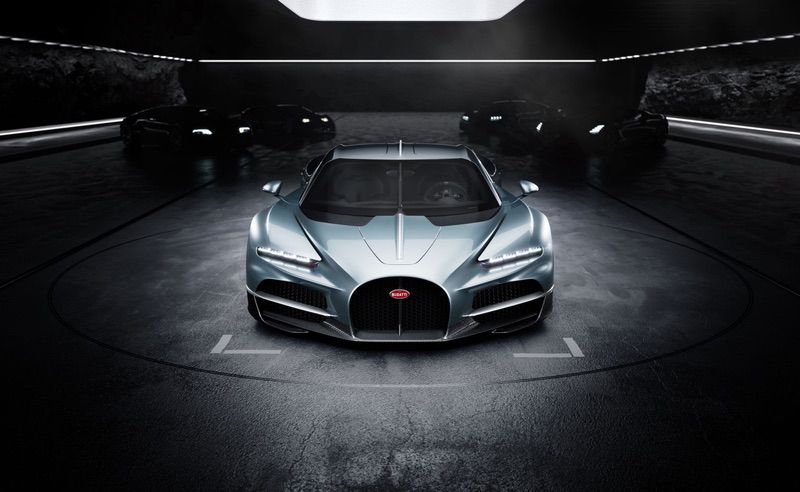
Practicality and Utility
Let’s be honest—no one buys a Bugatti Tourbillon to pop down to the shops or do the school run (unless your child’s classmates arrive in Gulfstream jets). But even in the rarefied air of multimillion-euro hypercars, some degree of practicality matters. Whether you’re taking it on a weekend escape to Lake Como or pulling up outside the Hôtel de Paris in Monaco, the Tourbillon still needs to work as a car. And the good news? It absolutely does—in its own unapologetically opulent way.
🎒 Luggage Space: Just Enough for a Weekend
Storage in the Tourbillon is… let’s say “intentional.” There’s a modest front trunk (frunk), designed to hold two custom-fitted Bugatti overnight bags—perfect for a romantic getaway or a discreet trip to your private airstrip. The space is well-finished, carpet-lined, and thoughtfully shaped, but don’t expect to squeeze in golf clubs or a week’s worth of luggage.
Interior storage is similarly limited but beautifully crafted. There’s a small glovebox, a centre console compartment for essentials, and discrete slots for keys, wallets, and maybe your Patek Philippe. Every inch is purposeful—there’s no wasted space, but also no clutter.
🧳 Daily Usability: Surprisingly Civilised
Where the Tourbillon surprises is in its day-to-day refinement. Thanks to its hybrid system, you can drive in full-electric mode for low-speed journeys, making it whisper-quiet and entirely emissions-free in urban areas. That’s not just good for the planet—it’s good for early morning departures from your villa without waking the neighbours (or your butler).
The ride quality is remarkably compliant, especially in “EB” mode, which softens the suspension and steering for comfort. Speed bumps, potholes, and uneven roads are absorbed with ease thanks to the adaptive suspension. Visibility is decent by hypercar standards, and parking sensors—along with a rear camera—make tight manoeuvres in tight places more manageable than you’d expect from something this wide and low.
And yes, it’s street-legal, with all the modern safety and driver-assist systems subtly integrated: adaptive cruise control, lane departure warning, even pedestrian detection. Bugatti has designed the Tourbillon to be as at home in Beverly Hills as it is on a closed Alpine pass.
🛠️ Reliability and Charging
Being part of the Rimac Group brings not just hybrid tech but also a new level of sophistication in system integration and diagnostics. The battery is engineered for performance but also built to last. Home charging is available via a bespoke wall box, and fast charging (at high-voltage stations) replenishes the battery quickly enough to make brief city stops both silent and efficient.
Maintenance intervals are expected to be generous, with remote software diagnostics and concierge-style service pickup and delivery. After all, if you can afford a Tourbillon, you’re probably not queuing at a dealership.
Real-World Ownership
So is it practical in the traditional sense? No, of course not. But for a car capable of 400+ km/h and revving to 9,000 rpm, the Tourbillon is shockingly livable. It’s not designed for school runs—but if you did show up at parents’ evening in one, you’d certainly be the talk of the car park.
Bugatti has always said its cars are meant to be driven—not just stared at behind velvet ropes. With the Tourbillon, that philosophy continues. It’s an everyday-useable dream, for those whose “everyday” includes private jets and dinner at The French Laundry.
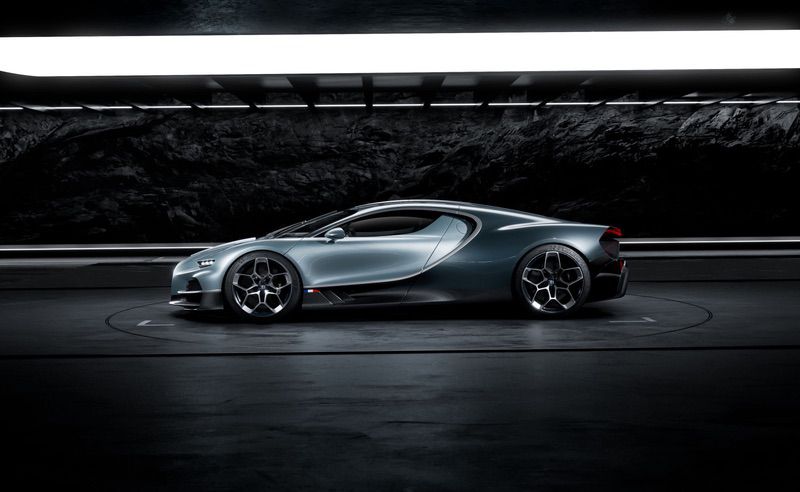
Technology and Innovation
If the Bugatti Tourbillon is a mechanical masterpiece, it’s also a triumph of hidden genius—a digital-age hypercar that hides its complexity behind a veil of analog charm. While its instrument cluster may be mechanical, and its interior stripped of screens, don’t be fooled: beneath its artisan surfaces lies some of the most advanced automotive technology ever engineered.
⚡ Hybrid Tech, Perfected
At the heart of the Tourbillon’s innovation is its seamless integration of hybrid and combustion power. Unlike most hybrids that are designed for efficiency or tax benefits, Bugatti’s system is tuned purely for performance and emotion. The 800-volt architecture allows for rapid energy transfer, minimal weight, and heat management under extreme load—ensuring sustained acceleration, not just short bursts.
Three electric motors work in harmony with the naturally aspirated V16, not only to boost power but also to enhance traction, balance, and responsiveness. The result is instantaneous torque delivery from standstill, rapid torque vectoring in corners, and whisper-quiet EV operation in city environments—all while keeping the V16 on standby like a sleeping beast.
🧠 Bugatti’s Smart Chassis Control
Beneath the flowing bodywork lies an equally sculpted underworld of carbon fibre and sensors. The Tourbillon rides on an active suspension system that reads the road surface in real time and adjusts damping, ride height, and roll stiffness accordingly. This allows it to switch from boulevard cruiser to apex predator with nothing more than a flick of a drive mode dial.
An advanced torque vectoring system manages all four wheels independently, aided by the dual rear electric motors. Whether you’re trail braking into a corner or gunning out of a hairpin, the system ensures flawless traction and balance, dialling in just the right amount of power to each wheel for maximum grip.
Even the aerodynamics are smart. Active aero elements—including a retractable rear wing and movable front vents—constantly adjust to driving conditions. At high speeds, they increase downforce and stability. At cruising speeds, they reduce drag and enhance efficiency. It’s not just tech for tech’s sake—it’s functional performance art.
📱 Digital Subtleties
While Bugatti proudly champions analog design in the Tourbillon’s cabin, the digital tools are still very much present—just subtle and refined.
A concealed central screen emerges from the dash only when needed, offering access to:
-
Navigation and route planning
-
Drive mode customization
-
Performance telemetry
-
Apple CarPlay and Bluetooth connectivity
The driver can also interface with the car through a companion app, offering real-time diagnostics, remote vehicle tracking, pre-conditioning (for the hybrid system), and access to exclusive Bugatti concierge services. Software updates are delivered over-the-air, ensuring the car’s systems are always optimised—no dealership visits required.
🔐 Security and Predictive Servicing
Another area where innovation shines is in the predictive servicing and ownership tech. With integrated sensors monitoring everything from tyre pressure to motor temperature and brake wear, the Tourbillon can notify Bugatti’s remote support team of any issue—often before the driver notices it. Owners are contacted proactively, and service appointments are arranged automatically.
Security features include facial recognition for access, encrypted key fobs, geofencing, and multi-level authentication for remote control features. After all, when your car is worth more than most homes, digital security is just as important as physical protection.
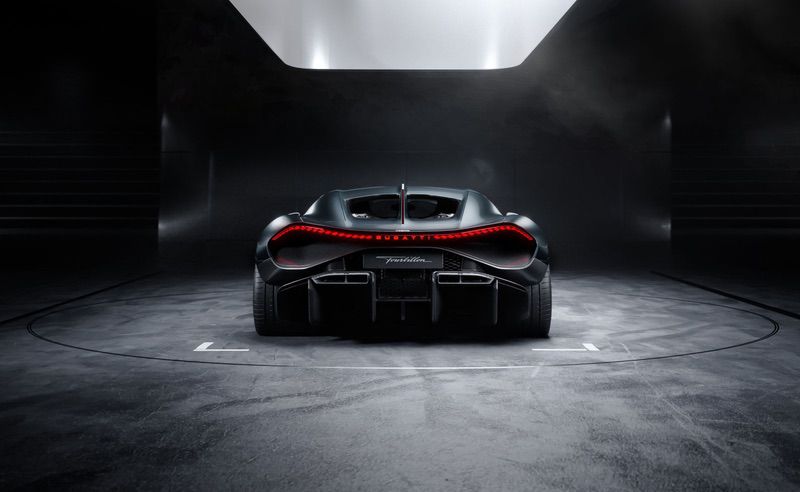
Ownership Costs and Value
Let’s get something straight: if you’re considering a Bugatti Tourbillon, you’ve already transcended the realm of traditional car buying. This isn’t about budgeting, financing, or calculating depreciation. It’s about rarity, legacy, and access to a very exclusive club—one where membership comes with a seven-figure price tag and perks that go far beyond horsepower.
💸 The Price of Entry
Bugatti hasn’t officially confirmed the exact price of the Tourbillon at the time of writing, but reliable reports place it in the realm of €3.8 to €4 million (before options and taxes). Of course, this is just the starting point. As with the Chiron, personalization through Bugatti’s Sur Mesure programme allows clients to tailor nearly every surface, stitch, and material. From heritage color schemes to exotic inlays and family crests on the seatbacks, the final price can easily exceed €5 million—and often does.
But price is only part of the story. Even getting an allocation is a privilege, usually reserved for previous Bugatti clients, celebrities, or collectors with a strong relationship to the brand. Newcomers to the marque may find the queue long and the doors selectively open.
🔁 Resale, Rarity, and Appreciation
Unlike most exotic cars, Bugattis are often appreciating assets—particularly low-volume, special-edition, or early-production models. The Veyron Super Sport, Divo, Centodieci, and Chiron Pur Sport have all seen significant value growth on the secondary market, thanks to limited production and global demand.
The Tourbillon is expected to follow suit, if not exceed those trends, for several reasons:
-
It marks the first Bugatti of the hybrid era
-
It’s powered by the last great naturally aspirated V16 ever likely to be produced
-
It ends the W16 lineage and begins a new chapter, making it a historically pivotal model
Collectors and investors are already viewing the Tourbillon as a future classic—a bridge between the combustion-dominated past and the electrified future. And with Bugatti likely to limit production (rumours suggest around 250–300 units globally), scarcity will drive long-term desirability.
🧾 Running Costs: Not for the Faint of Wallet
Owning a Bugatti has never been inexpensive, and the Tourbillon is no different. While Bugatti offers multi-year service and maintenance packages, owners should still be prepared for:
-
Tyres: Custom-made, high-speed-rated Michelins that can cost upwards of €30,000 per set
-
Annual servicing: Easily running into the five-figure range, especially if components like ceramic brakes or hybrid systems require attention
-
Insurance: Premiums are as exclusive as the car itself, with bespoke coverage tailored to driver profiles, storage security, and global travel
That said, Bugatti provides concierge-level ownership experience, with vehicle collection and delivery for service, global Bugatti Flying Doctors, and 24/7 support. For clients spending millions, the goal isn’t to reduce costs—it’s to eliminate inconvenience.
🏛️ Value Beyond Money
But perhaps the real value of the Tourbillon isn’t financial at all. It’s emotional. It’s cultural. It’s about owning a car that will one day be studied in museums, whispered about in collector circles, and referenced in future design textbooks. The Tourbillon isn’t just a Bugatti—it’s a mechanical heirloom. One that says, “I was there when the V16 came back. I drove it.”
And for those fortunate enough to park one in their private collection—or better yet, drive it across continents—the cost is simply part of the privilege.
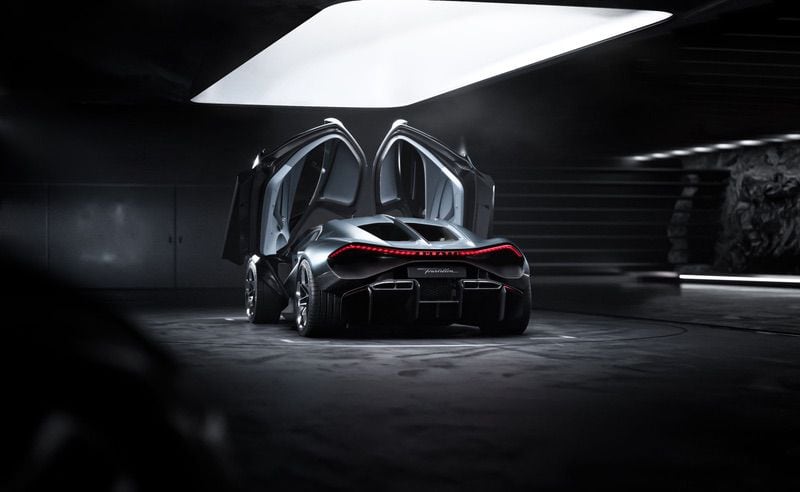
Maintenance and Warranty
Buying a Bugatti Tourbillon is one thing—maintaining it is a whole different tier of luxury. But don’t worry—if you can afford the car, Bugatti ensures that ownership is as seamless as the engineering. From service schedules to warranty coverage, Bugatti has designed a world-class aftercare program that matches the car’s mechanical complexity and exclusivity.
🧰 Tailored Maintenance for a Masterpiece
The Tourbillon may be a hybrid hypercar with a V16 engine, but that doesn’t mean it asks you to babysit it. In fact, Bugatti has gone out of its way to make maintenance simple, scheduled, and invisible—for the owner, at least.
-
Annual Servicing: Bugatti recommends a yearly service, regardless of mileage, to keep the vehicle in peak condition. This includes everything from oil changes and fluid top-ups to hybrid system diagnostics and mechanical inspections.
-
Component Lifespan: Key parts like the carbon-ceramic brakes, high-speed tyres, and hybrid batteries are engineered for longevity—but replacements, when needed, come at a premium. For example, tyres—designed for 400+ km/h speeds—may need replacing more frequently if the car is driven hard. Expect costs in the €20,000–€30,000 range per set, with specialist fitting and testing included.
-
Global Flying Doctors: Bugatti’s elite network of “Flying Doctors”—master technicians who travel to the customer—are on call for any service, upgrade, or concern. Whether you live in Dubai, Monaco, or Malibu, they’ll come to your garage and ensure your Tourbillon is kept in flawless form.
-
Factory Service Return: For major overhauls or upgrades, Bugatti will arrange for the car to be returned to Molsheim, where it is serviced at the same facility it was born in. It’s not just service—it’s a ritual of restoration.
🛡️ Warranty Coverage
Bugatti offers one of the most comprehensive warranty programs in the hypercar world, though—as with everything at this level—it’s tailored, not templated.
-
Standard Warranty: The Tourbillon is expected to come with a 4-year manufacturer’s warranty, covering all major components including the powertrain, hybrid system, suspension, and electronics. This warranty is transferable, which adds value on the resale market.
-
Battery Coverage: The hybrid system, including the battery pack and electric motors, is covered under a separate, long-term warranty. While specifics are still being finalised, expect coverage in the range of 8 years or 160,000 km, similar to Rimac’s own policies.
-
Extended Warranty Options: Bugatti offers extended coverage plans for clients wishing to maintain worry-free ownership well into the future. These packages include not just warranty extensions but concierge service programs, regular diagnostics, and even scheduled pre-emptive part replacements.
-
Insurance Compatibility: Bugatti works closely with premium insurers to integrate warranty coverage with custom-built insurance policies—helping to manage logistics, claims, and service coordination through a single point of contact.
Preventative Maintenance Philosophy
What truly sets Bugatti apart is their preventative maintenance model. The Tourbillon is constantly collecting data on its own health—monitoring temperature thresholds, pressure levels, battery performance, and wear indicators. This allows Bugatti to predict issues before they happen, reaching out to clients before warning lights ever appear.
It’s not just smart—it’s stress-free. Owners don’t worry about what might go wrong. Bugatti tells them what will need attention, when, and where it will be handled.
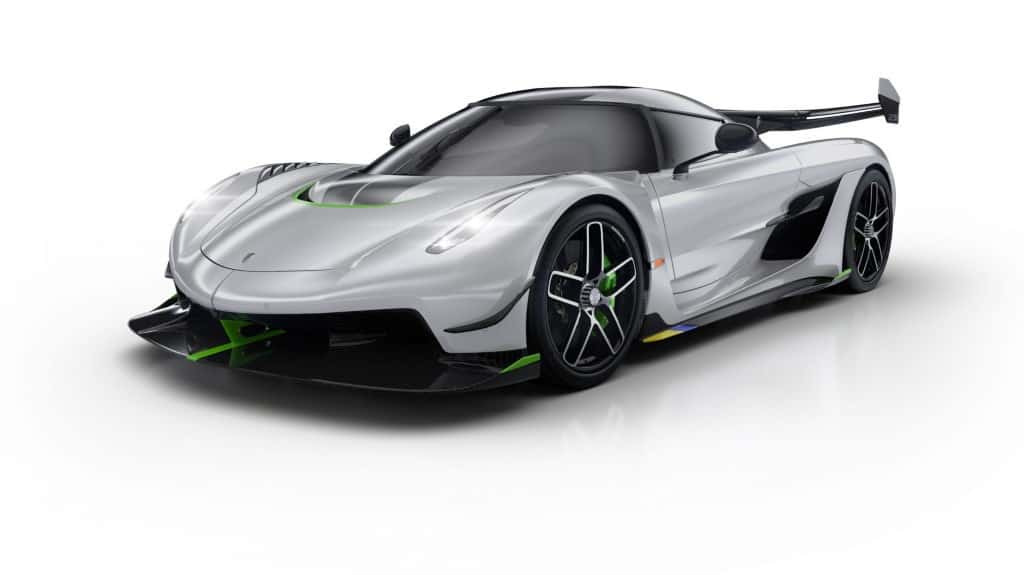
Other Competition
In the world of hypercars, where physics is bent and limits are shattered, competition is fierce—but also rarefied. The Bugatti Tourbillon doesn’t just compete with fast cars; it competes with philosophies, with brands that define their own paths to performance. So where does the Tourbillon stand against the best of the rest? Let’s take a look at how it stacks up against its most notable rivals.
🆚 Bugatti Tourbillon vs. Rimac Nevera
Key Stats:
-
Power: 1,914 hp (Nevera) vs. 1,800 hp (Tourbillon)
-
Drivetrain: Fully electric vs. V16 hybrid
-
Top Speed: ~412 km/h (Nevera) vs. 400+ km/h (estimated Tourbillon)
-
0–100 km/h: ~1.8 sec (Nevera) vs. ~2.0 sec (Tourbillon)
Rimac’s Nevera is, in many ways, the technological lightning bolt of this generation. Fully electric and developed by the same group that now owns Bugatti, it offers outrageous speed, unmatched torque vectoring, and zero-emissions bragging rights.
But the Tourbillon takes a different route—emotion over silence, mechanical beauty over digital dominance. Where the Nevera is a masterclass in electric performance, the Tourbillon delivers a richer, more visceral experience, thanks to its V16 wail and analog character.
The Nevera may win on raw acceleration, but the Tourbillon is more engaging, more artistic, and arguably more iconic.
🆚 Bugatti Tourbillon vs. Koenigsegg Jesko Absolut
Key Stats:
-
Power: 1,600 hp (on E85)
-
Top Speed: Claimed 500+ km/h
-
Drivetrain: Twin-turbo V8, RWD
-
Weight: Significantly lighter than the Tourbillon
The Koenigsegg Jesko Absolut is all about raw speed and minimal drag. On paper, it could dethrone the Chiron Super Sport as the fastest production car ever made. It’s lean, aggressive, and terrifyingly quick.
But it’s also a car built for the extreme edge of the performance envelope. The Tourbillon, on the other hand, aims to combine extreme performance with luxury, usability, and timeless style. It’s heavier, more refined, and doesn’t require drag strips or airfields to enjoy. If the Jesko is a missile, the Tourbillon is a ballistic opera house—faster than almost anything, but civilised enough to cruise through Monte Carlo.
🆚 Bugatti Tourbillon vs. Mercedes-AMG One
Key Stats:
-
Power: 1,063 hp
-
Drivetrain: F1-derived hybrid V6
-
Top Speed: ~352 km/h
-
Track Focus: Extremely high
The AMG One is arguably the most track-focused hypercar of the modern era. Its Formula One powertrain, active aero, and obsessive weight reduction make it blisteringly quick—on a circuit. But that comes with compromises: it’s loud, cramped, and notoriously temperamental at low speeds.
The Tourbillon, in contrast, is designed for grand touring elegance at insane speeds. You can wear a tuxedo while driving it and not sweat through your jacket. It’s smoother, more luxurious, and far more versatile. On track, the AMG One might edge ahead. On the road, the Tourbillon wins hearts, not just lap times.
🆚 Bugatti Tourbillon vs. Aston Martin Valkyrie
Key Stats:
-
Power: 1,160 hp (naturally aspirated V12 hybrid)
-
Weight: Ultra-light
-
Focus: Maximum downforce and track purity
The Valkyrie is essentially a Le Mans car with number plates. Co-developed with Red Bull Racing, it’s uncompromising, loud, and brilliant—but also demanding and purpose-built. You sit like an astronaut, the ride is brutal, and the interior is Spartan at best.
The Tourbillon offers a broader spectrum of appeal. It’s not chasing tenths—it’s chasing perfection in emotion, design, and craftsmanship. While the Valkyrie is a hypercar for track days, the Tourbillon is one for the global grand tour.
🏁 Verdict: A Class of Its Own
In truth, no car rivals the Bugatti Tourbillon directly. Some are faster. Some are lighter. Some are more track-oriented or environmentally progressive. But none offer the same balance of opulence, mechanical theatre, and pioneering engineering.
The Tourbillon is not trying to beat everyone at their own game—it’s playing a different one altogether. It’s a collector’s dream, a technophile’s fantasy, and a purist’s rebellion against the all-electric tide—all wrapped in one achingly beautiful package.

